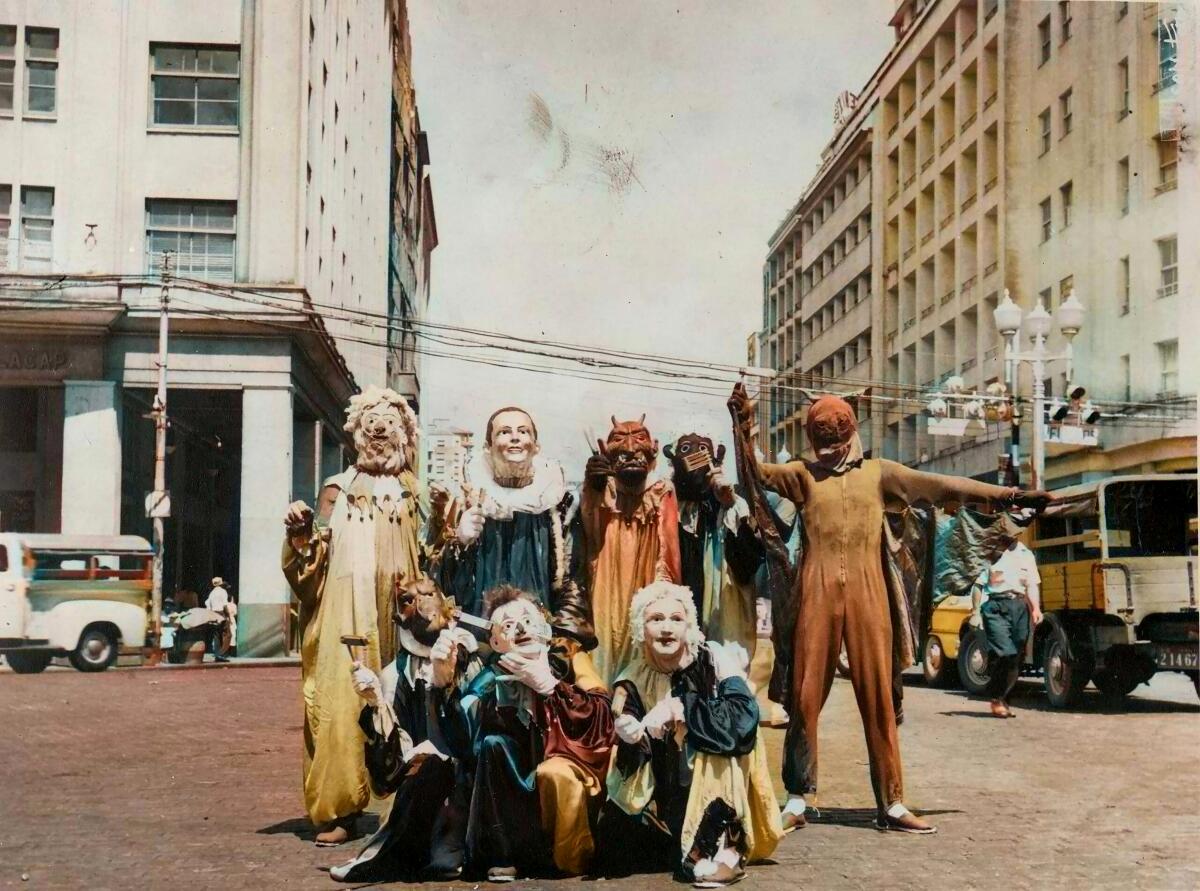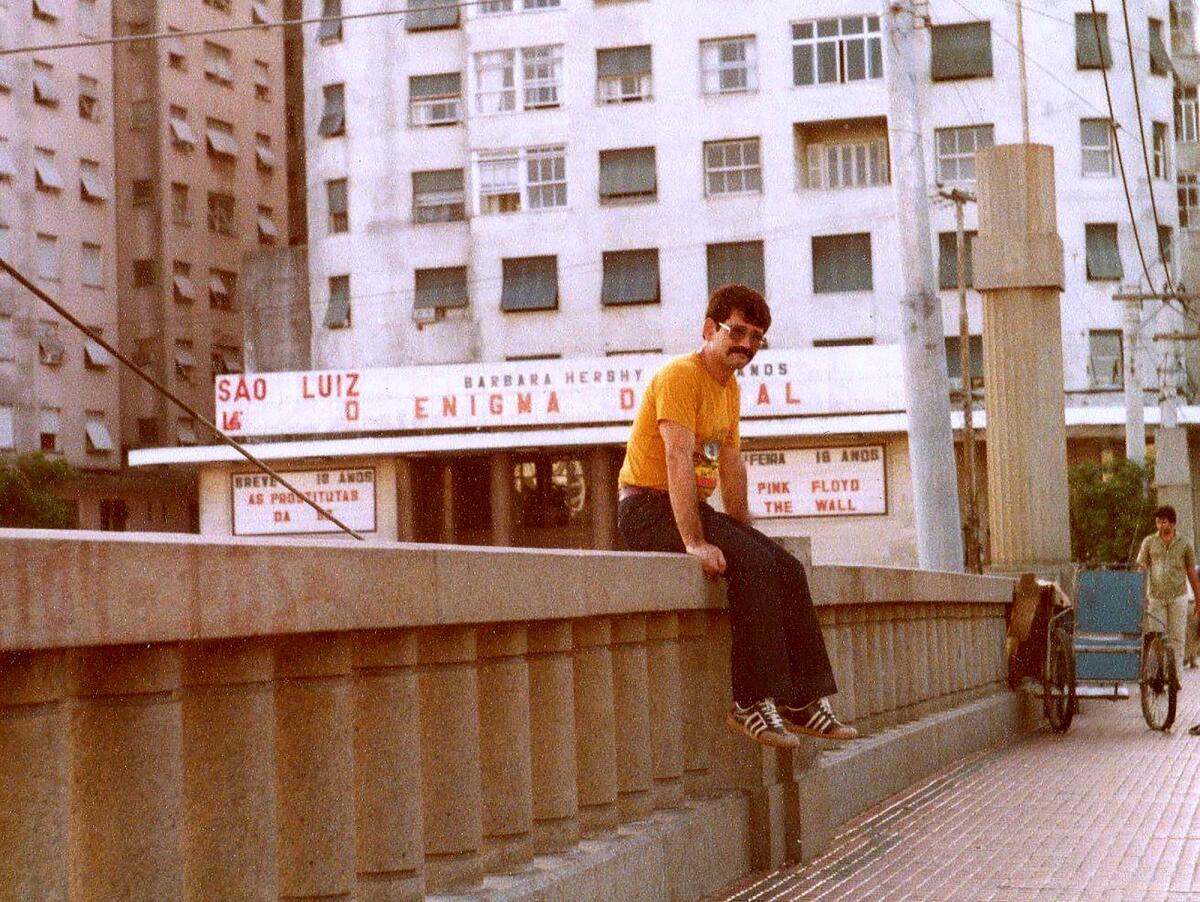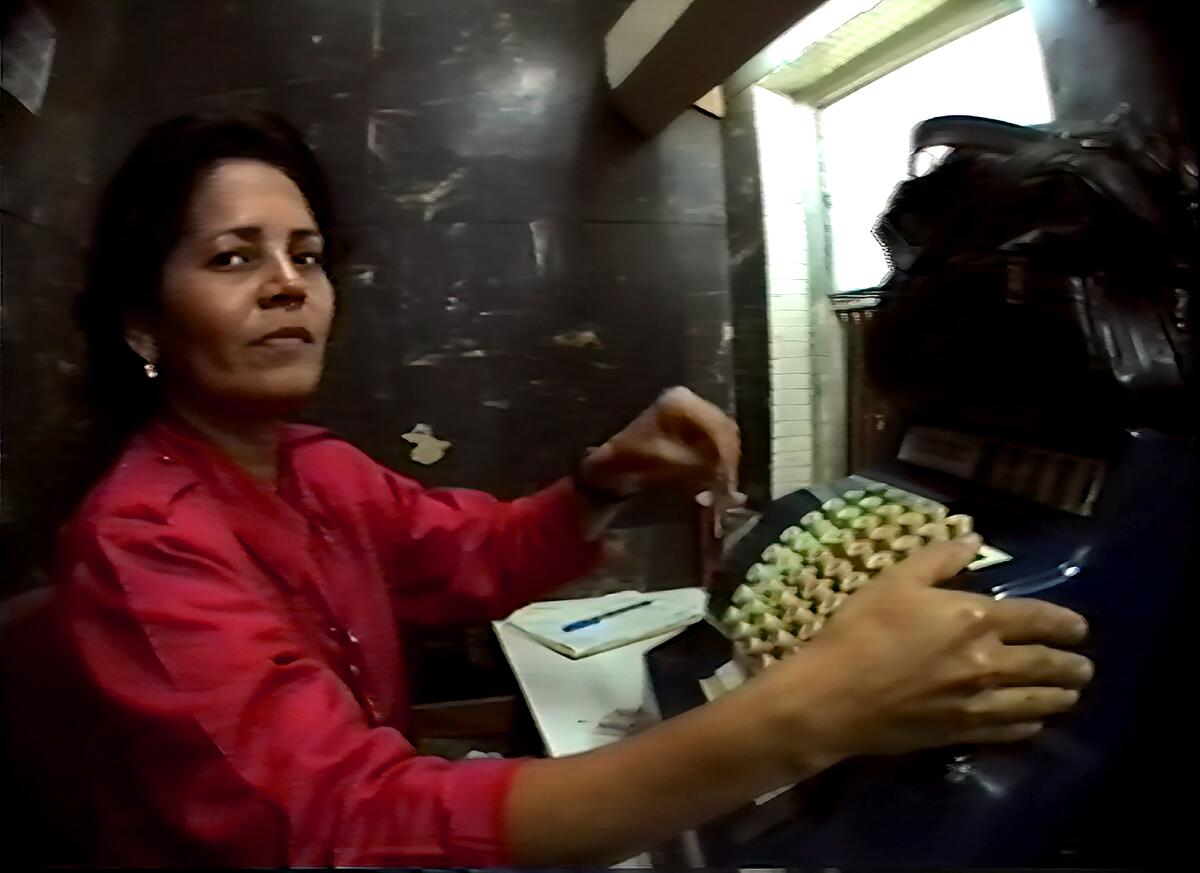Latinx Files: When movie theaters become churches

Periodically, the Latinx Files will feature a guest writer. This week, we’ve asked film journalist Carlos Aguilar to fill in. If you have not subscribed to our weekly newsletter, you can do so here.
When acclaimed Brazilian director Kleber Mendonça Filho was a journalism student in his hometown of Recife more than three decades ago, he filmed and photographed the local movie palaces that had nurtured his cinephilia.
Many of these spaces, built in the early part of the 20th century, shut down in the late ‘80s and early ‘90s. Yet their architecture had remained intact. Those images have now become cinema itself, serving as the foundation for his latest documentary, “Pictures of Ghosts.”

“Even as a very young person, every time I went in I thought, ‘This is an incredible portal to the past because they were built for another time,’” Mendonça Filho said during a recent Zoom interview.
Several movie theaters were turned into evangelical churches. The transition from house of wonder to house of worship makes practical sense— cinemas have plenty of seats pointing in the same direction, and they’re equipped with speaker systems, which come in handy for priests to spread the gospel.
“It’s almost like life in the wild,” he said.
You’re reading Latinx Files
Fidel Martinez delves into the latest stories that capture the multitudes within the American Latinx community.
You may occasionally receive promotional content from the Los Angeles Times.
“When a big carcass is abandoned, soon other elements will come in to make the most of it. That’s what happened. The cinemas closed and the churches came in.”
Of those once-glorious spaces, one still functions as a film cathedral: the São Luiz Cinema. Purchased by Recife’s local government in 2008, the 1,000-seat movie palace now screens classic repertory and art-house titles and has become a bustling cultural hub.
“Seeing a film at the São Luiz is a completely different experience,” he said. “It’s crystal clear now for so many young people who were previously not aware of its existence because they were educated going to the shopping mall multiplexes. It’s like this everywhere.”
Mendonça Filho sees plenty of parallels between Recife and Los Angeles. The director remembers visiting the city in 2012 to show his first feature, “Neighboring Sounds,” at the now-defunct Los Angeles Film Festival. While walking down Broadway with a friend, he noticed many of the previously splendorous movie theaters were out of commission. One, the State Theatre, was, ironically, now owned by Universal Church, a Brazilian evangelical group.

Three months ago, Mendonça Filho found himself in L.A. yet again to screen “Pictures of Ghosts” at AFI Fest. He returned downtown and discovered that the historic Tower Theatre had become an Apple store.
“It’s incredibly restored, but at the same time, it feels like a mortician did an incredible job in making it look amazing,” he said. “But it’s a zombie. It’s not a cinema anymore.”
The sight was especially jarring since Mendonça Filho knew the Tower Theatre had been the location for an important moment in David Lynch’s masterpiece, “Mulholland Drive.”
“There are different layers of time on top of one another in that building,” he said. “You think about the history of that place, and then you think of Lynch’s film, and then you look at the Apple store and your mind explodes. That’s the kind of feeling that led me to ‘Pictures of Ghosts.’ ”
‘One day, without realizing it, you wake up in the soles of another you, one who inhabits an interstitial divide between two distinct worldviews.’
That in the past the cinemas on Broadway catered to working-class Latino communities, programming Spanish-language titles, speaks of their influence in mapping life in the city.
“I’m a foreign observer. I know L.A. through films and through the 15 times I’ve visited. But it’s fascinating to think about the city, not only as a city that makes films but how films were presented in the city,” he said. “It tells a lot about the history of the city itself.”
Despite the advent of streaming services and the challenging market for non-franchise productions, Mendonça Filho feels optimistic about the future of the theatrical experience. Last year, “Pictures of Ghosts” was a “mini blockbuster” in Brazilian cinemas. For the director it’s not about streaming versus theatrical but about all viewing options coexisting.
“I enjoy watching films on streaming. But just yesterday I went to see ‘Late Spring’ by [Yasujirō] Ozu on a 16mm print about a mile from where I live,” he said. “I like the idea that my kids can discover cinema in different ways, but the industry is always looking for ways to subtract.”
The problem, Mendonça Filho believes, is that streamers managed to make audiences forget that most new releases still first play theaters before becoming available on their home screens.
“Five or six years ago, my non-film-industry neighbors knew that if they wanted to see a new film they had to go to the cinema,” he said. “But on opening weekend of my films ‘Bacurau’ and ‘Pictures of Ghosts,’ they asked me if they could see it on Netflix. I said, ‘It’s not going to be on streaming for quite some time. You have to go to the cinema to watch it.”
On the other hand, there are also unflattering aspects about the current landscape of theatrical exhibition. Projection has become almost entirely automated, and most multiplexes around the world don’t much care about the image and sound of films being properly presented.
“Years ago, the image you saw in the cinema was not the image you could see at home,” said Mendonça Filho. “It’s daunting to say that I have better projection and better sound at home than at some of the commercial cinemas.”
That’s precisely why places like the São Luiz in Recife or the Aero Theatre here in Santa Monica matter. The people in charge of them consider cinema an art form, which requires the proper attention to the quality of the projection, and not a disposable product.
“We have to work to make sure that these very special cinemas keep on going because they renew oxygen for the whole idea of cinema, otherwise they might get phased out,” he said.
Consider subscribing to the Los Angeles Times
Your support helps us deliver the news that matters most. Become a subscriber.

Things we read this week that we think you should read
Column: The Yolanda Saldívar docuseries is the latest exploitation of Selena’s memory
Oxygen’s “Selena & Yolanda: The Secrets Between Them” capitalizes off Selena’s murder and speaks to Hollywood’s lack of investment in Latinx stories. Column by De Los weekly contributor Alex Zaragoza.
Comedian Hoozay’s 5 favorite Latino-owned businesses in Southern California
Stand-up comedian Jose Velasquez, a.k.a. Hoozay, talks Salvadoran heritage and his five favorite Latino-owned businesses in Southern California.
Inside the NHL’s push to recruit Latino hockey fans and grow the game
Forty percent of the NHL’s 32 teams play in the eight states boasting the largest Latino populations. The league wants more of them to become fans.
Activist Maria Teresa Griffin, who proved her mettle in fight against East L.A. prison, dies
Maria Teresa Griffin, a founding member of the Mothers of East Los Angeles protest group, has died after battling amyotrophic lateral sclerosis. She was 74.
Column: ‘This Fool’ got L.A. Latinos right. Who’s to blame for its cancellation?
The show’s untimely end brought the same reaction as previous cancellations. But the problem, argues Times columnist Gustavo Arellano, is as much with Latino viewers who failed to watch as it is with Hollywood.
How we made tacos a Black thing in L.A.
For more than three decades, Black chefs in Los Angeles have been making the taco their own, turning it into a staple of California soul cuisine.
The Latinx experience chronicled
Get the Latinx Files newsletter for stories that capture the multitudes within our communities.
You may occasionally receive promotional content from the Los Angeles Times.




